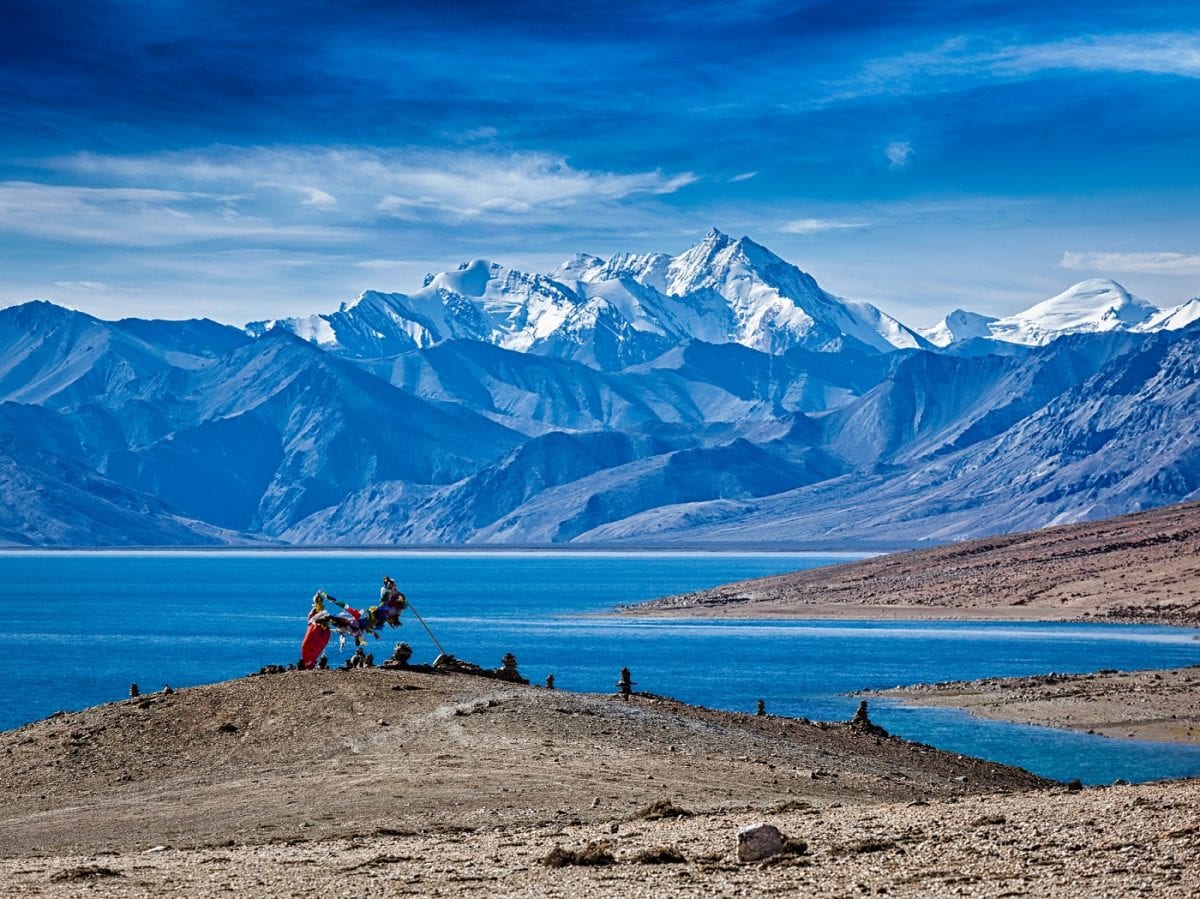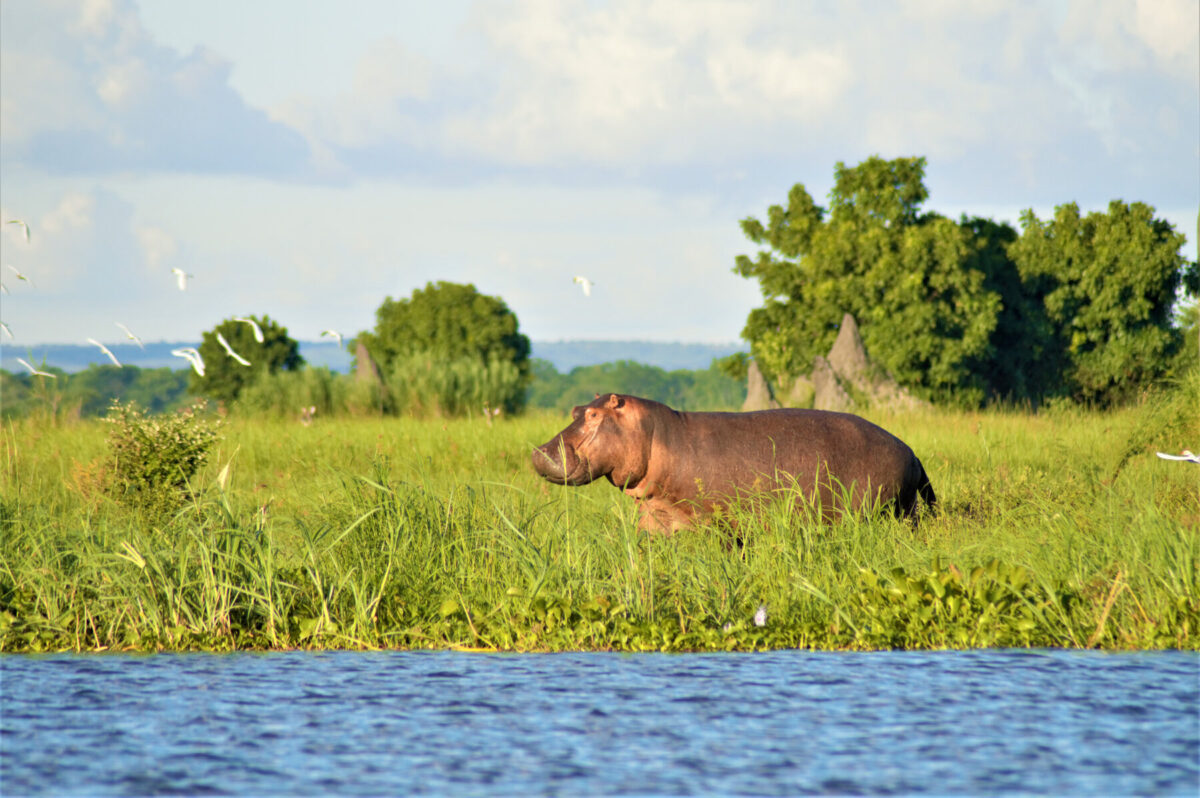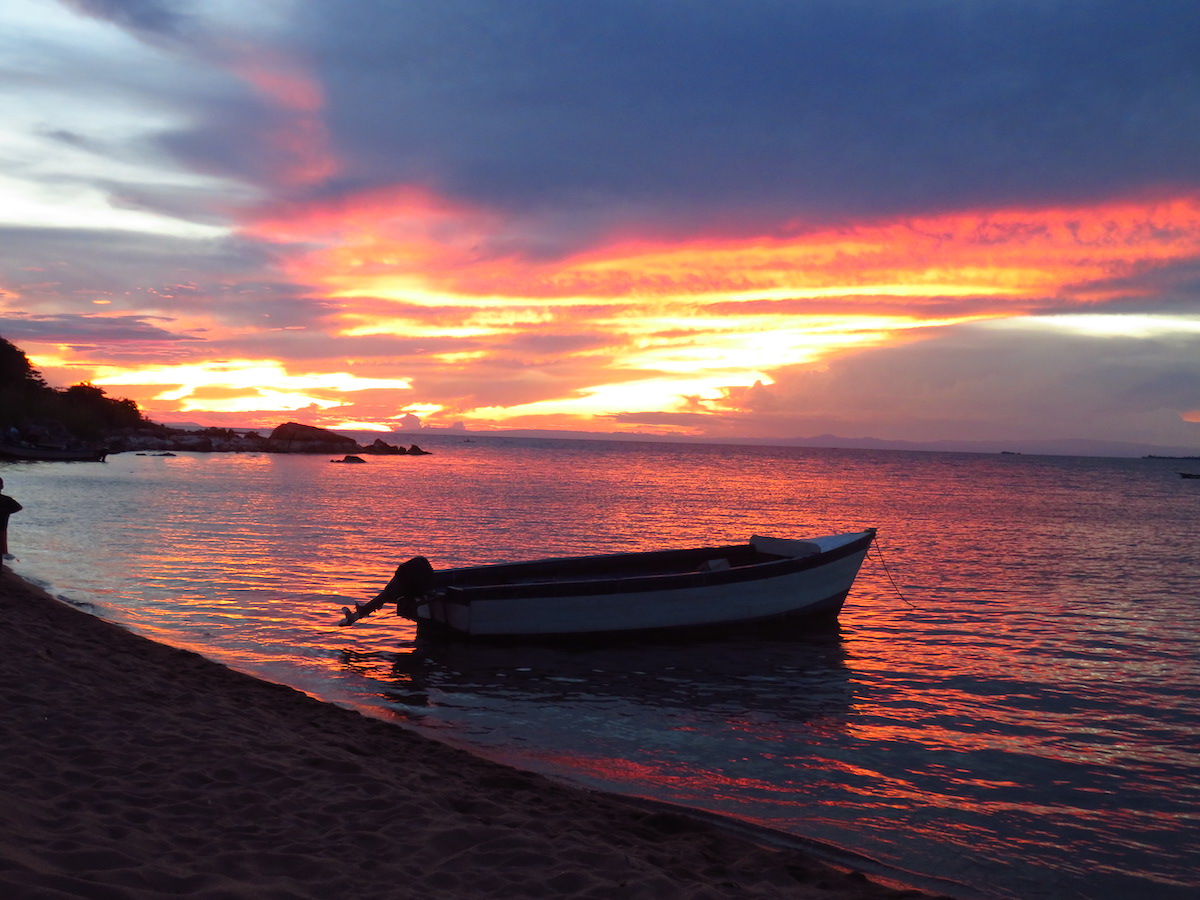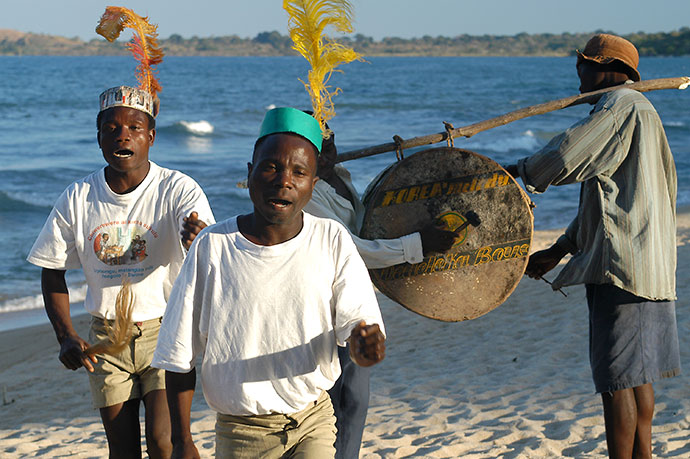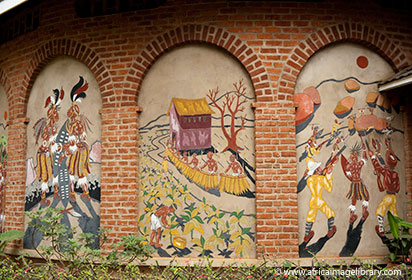From the moment I crossed the Malawi border I knew … ‘The Warm Heart of Africa’ had claimed another victim, love-struck and powerless to resist the tranquil charms of this most welcoming of countries.
Philip Briggs, author of Malawi: the Bradt Guide
Malawi is one of Africa’s most underrated travel destinations. Indeed, many travellers who arrive on the continent barely aware that Malawi exists come to regard it as their favourite African country by the time they return home. Malawi’s inherent likeability has earned it several nicknames – ‘Land of the Lake’, ‘Warm Heart of Africa’, and ‘Africa for Beginners’ – that go a long way to summing up its winning charms. Few countries are so dominated by a single geographical feature. Lake Malawi, enclosed by sheer mountains and edged by a seemingly endless succession of sandy beaches, follows the dramatic contours of the Great Rift Valley for a distance of 585km, accounting for more than 15% of the country’s surface area.
There is much truth in the phrase ‘The Warm Heart of Africa’. Not only do Malawi’s climate and lush vegetation conform effortlessly to every stereotyped image of tropical Africa, but the people exude a laidback warmth that make visitors feel instantly at home. And ‘Africa for Beginners’? Well, certainly, this compact, cheap and hassle-free country would provide a great introduction to Africa, offering a rich variety of attractions suitable to families, honeymooners, wildlife lovers and hard-core backpackers alike. The lake is the indisputable focal point of Malawi’s tourist industry. Backpackers gather in their hundreds at lakeshore villages such as Cape Maclear and Nkhata Bay, while a host of more exclusive retreats cater to higher paying tourists. But there is more to Malawi than a lake, including accessible national parks teeming with wildlife, ancient rock art sites, forests alive with tropical birds, and hiker-friendly mountains such as Nyika and Mulanje.
For more information, check out our guide to Malawi
Food and drink in Malawi
Food
Eating out
The staple diet in Malawi is nsima, a stiff porridge made from pounded maize meal boiled in water. Few travellers develop a taste for nsima, so it is fortunate that most local restaurants also serve rice and potato chips (or occasionally cassava or sweet potato chips).
At tourist-class hotels and restaurants in the major towns, you can eat food to international standards at a very reasonable price – there are few upmarket restaurants in Malawi where you can’t eat well for under US$10 for a main course (though better restaurants in Lilongwe and Blantyre might be more like US$15). Local restaurants tend to serve a predictable and somewhat dull menu of beef (nyama ngombe), chicken (mkuku) or fish (nsomba) with chips or rice or nsima, but are very reasonably priced at anything from US$2 to US$4 for a starch-heaped plate, often accompanied by a sharp-tasting dollop of stewed cassava or pumpkin leaves (chisisito), or a heap of stewed beans. Popular fish include chambo (a type of tilapia), kampango (a type of catfish) and mpasa (a large cichlid with dark flesh that is often referred to as lake salmon). The most widely available fish in Malawi is usipa, a tiny fish that is generally sun-dried after it is caught.
Restaurants
At tourist-class hotels and restaurants in the major towns, you can eat food to international standards at a very reasonable price – there are few upmarket restaurants in Malawi where you can’t eat well for under US$10 for a main course (though better restaurants in Lilongwe and Blantyre might be more like US$15). Local restaurants tend to serve a predictable and somewhat dull menu of beef (nyama ngombe), chicken (mkuku) or fish (nsomba) with chips or rice or nsima, but are very reasonably priced at anything from US$2 to US$4 for a starch-heaped plate, often accompanied by a sharp-tasting dollop of stewed cassava or pumpkin leaves (chisisito), or a heap of stewed beans. Popular fish include chambo (a type of tilapia), kampango (a type of catfish) and mpasa (a large cichlid with dark flesh that is often referred to as lake salmon). The most widely available fish in Malawi is usipa, a tiny fish that is generally sun-dried after it is caught.
Cooking for yourself
If you want to put together your own meal, you’ll find that the variety of foodstuffs available varies from season to season and from town to town, and sudden shortages of commonplace items are to be expected. In most towns, you can buy fresh bread at the Shoprite or other supermarkets, or at a bakery. Supermarkets also normally stock a variety of spreads and packaged food such as yoghurt, potato crisps, biscuits and sometimes cheese and cold meat. Fruits and vegetables are best bought at markets, where they are very cheap, as is fresh meat. Potatoes, onions, tomatoes, bananas, sugarcane and some citrus fruits are available in most markets around the country. In larger towns and in agricultural areas a much wider selection of fruits and vegetables might include avocados, peas and beans, paw-paws, mangoes, coconuts and pineapples. For hikers, packet soups are about the only dehydrated meals available throughout Malawi. Dried staples such as rice, maize meal and pasta can be bought in supermarkets and markets.
Drinks
Brand-name soft drinks such as Pepsi, Coca-Cola and Fanta are widely available in Malawi and cheap by international standards. If the fizzy stuff doesn’t appeal, you can buy imported South African fruit juices at most large supermarkets. Frozen fruit squashes are sold everywhere in Malawi for a few kwacha; they’re very sweet but otherwise quite refreshing on long walks and bus trips. Tap water is generally safe to drink in towns, providing the chlorine hasn’t run out, but bottled mineral water is available if you prefer not to take the risk.
Traditional African beer is made of fermented maize or millet. It is brewed in villages for private consumption, and also brewed commercially to be sold in litre cartons. The most popular brand of traditional beer is the wonderfully titled Chibuku Shake-Shake (the latter half of the name refers to the need to shake the carton before opening), and special Chibuku bars can be found in most towns and villages. A carton of Chibuku is very cheap and, despite its gruel-like texture, surprisingly rich in nutrients when compared with most alcoholic drinks. Unfortunately, African beer is something of an acquired taste: most travellers can’t stand it.
Wines are widely available in hotels, bars and supermarkets at high import prices. Spirits such as cane, brandy and gin are manufactured locally, while a good variety of imported spirits is available in supermarkets and better bars. The Malawi Gin is well loved, so much so that the manufacturers can’t always keep up with demand, and bars will periodically run short of it. It may not be quite what you’re used to, but is well worth trying, and closing the day at least once with a sunset and an MGT – Malawi Gin & Tonic, that is – is practically mandatory.
Health and safety in Malawi
Health
People new to Africa often worry about tropical diseases, but if you take the appropriate precautions, it is accidents that are more likely to carry you off. Road accidents are very common in many parts of Malawi, so be aware and do what you can to reduce risks: always travel during daylight hours and refuse to be driven by a drunk. Listen to local advice about areas where violent crime is rife, too.
Within Malawi, private clinics, hospitals and pharmacies can be found in most large towns, and doctors generally speak fluent English. Consultation fees and laboratory tests are remarkably inexpensive when compared with most Western countries, so if you do fall sick it would be absurd to let financial considerations dissuade you from seeking medical help.
Preparations
Make sure all your immunisations are up to date. Proof of vaccination against yellow fever is needed for entry into Malawi if you are coming from a yellow fever endemic area. Please discuss with a travel health expert. It is also wise to be up to date on tetanus, polio and diphtheria (now given as an all-in-one vaccine, revaxis, which lasts for ten years), typhoid and hepatitis A. Other vaccines which could be recommended include hepatitis B and rabies.
The biggest health threat is malaria. There is no vaccine against this mosquitoborne disease, but a variety of preventative drugs is available, including mefloquine, malarone and the antibiotic doxycycline. The most suitable choice of drug varies depending on the individual and the country they are visiting, so visit your GP or a travel clinic for medical advice. If you will be spending a long time in Africa, and expect to visit remote areas, be aware that no preventative drug is 100% effective, so carry a cure in case you can’t get to medical help easily. It is also worth noting that no homeopathic prophylactic for malaria exists, nor can any traveller acquire effective resistance to malaria. Those who don’t make use of preventative drugs risk their life in a manner that is both foolish and unnecessary.
Safety
Crime
It is difficult to strike the right balance when discussing crime in a country such as Malawi. An analytical understanding of how and where you are most likely to become a victim of crime will not only help prevent such an experience, but it will also allow you to relax in situations where it isn’t a serious concern. African cultures are inherently honest, more so perhaps than ours, and to the average Malawian theft is unspeakably wrong, to the extent that petty thieves are regularly killed by mob justice. Because of this, small-town and rural Malawi remains very safe for travel, because Malawians in general wouldn’t think of robbing a tourist, or anybody else for that matter.
On the other hand, crime abounds in the cities, where petty thieves often work the markets and bus stations targeting any likely victim, and tourists are easily identified as such. Even so, there is no significant risk attached to walking around the city centres by day, though the market area of Lilongwe is very dodgy after dark. Elsewhere, don’t tempt fate by wandering alone along unlit streets at night, or going out with more money than you need. If you need to carry your money on your person, use a hidden money-belt. To avoid revealing its location in public, keep whatever spare cash you are likely to need elsewhere. Don’t wear jewellery of financial or sentimental value, and if you can, leave that give-away daypack in your hotel room. Finally, when in doubt, use a taxi – they are very cheap in the cities.
Many travellers routinely carry their money-belt on their person, even walking around a city at night. Anecdotal evidence gathered over years of African travel suggests this is not a good idea, as muggings, snatchings and pickpocketings are far more common occurrences than a locked room being broken into. Obviously, an element of judgement comes into this: if a room feels insecure or a hotel has a bad reputation, don’t leave anything of importance in it. And when you do leave stuff in a room, check that the windows are sealed and the door is properly locked. One factor to be considered is that some travellers’ cheque companies will not refund cheques stolen from a room.
In Malawi, crime against tourists occurs mostly in a few particular ‘trouble spots’ in the cities and along the lakeshore. The pattern appears to be a sudden outbreak of mugging and snatch thefts in one particular resort, followed by a quiet period, indicating that these robberies are largely the work of one particular gang which is eventually arrested or moves on. Lilongwe, Blantyre, Nkhata Bay, Cape Maclear and Salima have all experienced problems of this sort in the past, so your best course of action is to be cautious when you first arrive at one of these places, and to ask local advice once you are settled in. Camping wild on parts of the lakeshore is no longer advisable anywhere in Malawi, and we’ve heard of several instances of tents being broken into at ‘proper’ campsites.
Be cautious of people who befriend you on buses and offer you food or drink, because it appears that the practice of doping travellers in this manner has spread into Malawi. It’s worth noting that con tricks are most likely to be perpetrated by a smartly dressed, smooth-talking guy who can easily build up a rapport with a traveller.
For all the above, Malawi remains a remarkably friendly and honest country. What most often gets travellers into trouble is one moment of recklessness – walking around Nkhata Bay at night with a money-belt on, wandering around Lilongwe market with a daypack dangling off your shoulder, dithering in a city bus station with a map in your hand and puzzled expression on your face, arriving in a city at night and not using a taxi to get to a hotel. Focus your energy on recognising high-risk situations, and do all you can to avoid them. The rest of the time, so long as you conduct yourself sensibly, you have little to fear in terms of crime!
Female travellers
Sub-equatorial Africa is probably one of the safest places in the world for women to travel solo, and Malawi poses few risks specific to female travellers who apply the same common sense they would at home. Unwanted flirtation and the odd direct sexual proposition are a possibility, especially if you mingle with Malawians in bars, but a firm ‘no’ should defuse any potentially unpleasant situation. Men in Malawi probably constitute less of a sexual hassle than men in many Western countries, and for that matter than other male travellers.
Most Malawians have better things to worry about than how female tourists choose to dress, especially in established resort areas. That said, it would be insensitive to wear shorts or a revealing top in areas with a strong Islamic presence, or in villages where tourists are still relatively unusual. Unlike during the Banda era, however, it is no longer illegal or even unusual for women to wear trousers as opposed to a skirt.
Any female (or, for that matter, male) readers concerned about travelling alone in Malawi, but unable to find a travel companion, might be reassured by the thought that there are plenty of places in Malawi where it will be easy to meet with kindred spirits, and there’s a lot to be said for hooking up with people along the way – better, by far, than making an advance commitment to travelling with somebody who you don’t know well enough to be sure they’ll be a suitable travel companion.
Travel and visas in Malawi
Visas
A valid passport is required, with an expiry date at least six months after you intend to depart Malawi. Visas are required for travellers from any country that requires Malawians to obtain a visa, including: the USA, UK and most, but not all, Commonwealth and EU passports (a full list is available at www.immigration.gov.mw). Visas can be obtained on arrival with the exception of the countries listed on the website. Visa fees on arrival are as follows: US$50 transit visa for seven days; US$75 single entry valid for 30 days, but extendable to 3 months (visit local immigration offices after 28 days to extend the visa for a fee of US$7 per additional month); US$150 multiple entry visa for six months; US$250 multiple entry visa for 12 months.
To avoid any mishaps, it’s best to confirm these with the embassy before you embark. For a list of all Malawian embassies and consulates, a useful webiste is www.embassypages.com/malawi.
Arriving overland in your own vehicle, you need to show registration documents at the border, and must buy a Temporary Import Permit (TIP) and insurance for one month (neither is very expensive). If the vehicle isn’t registered in your name, you also need an official letter giving you permission to cross borders with it.
Getting there and away
By air
There are no direct flights to Malawi from outside Africa, but connecting inter-African flights are operated by Ethiopian Airlines, Malawian Airlines, Kenya Airways and South African Airways. Most international flights land at Kamuzu International Airport, 26km from Lilongwe, but Ethiopian Airlines and South African Airways both run services several times weekly to Chileka Airport, 16km north of Blantyre. International and domestic airport taxes are included in the ticket price. Good deals are often available through individual carrier websites, but flight specialists still have a part to play. Getting the lowest price will require several calls and may result in some rather complicated routing.
Overland
Malawi is a popular fixture on the overland and backpackers’ trail between eastern and southern Africa, and as many tourists arrive in Malawi overland as by air. Many such people travel independently, but an increasingly popular choice for first-time visitors is an overland truck trip, which allows you to compress several countries into a limited period. Some of the overland companies include Absolute Africa, African Overland, African Trails, Dragoman, Drifters and Nomad Africa Adventure Tours.
To compare itineraries see the Malawi holidays on SafariBookings.
Getting around
Internal flights
Malawian Airlines is the end result of the liquidation of Air Malawi and the subsequent partnership with Ethiopian Airlines in 2013. Their routes include domestic flights between Lilongwe and Blantyre. A more versatile option is Ulendo Airlink, which offers daily services to Likoma Island, Chelinda (Nyika National Park), and Mfuwe (Zambia). Private charters are also available from Ulendo. There is a US$7 departure tax on all domestic flights, payable in cash at the airport.
Self-drive
Malawi is fairly easy to drive around. The speed limit for main roads is 80km/h and in towns drops down to 50km/h. Although the change is not always signposted, it’s best to slow down in towns and wait to regain speed until well after an inhabited area to avoid speed traps set up by the police. As in most former British colonies, and all neighbouring countries, driving is on the left side of the road, requiring an additional adjustment for visitors from North America and mainland Europe. Petrol is blended with ethanol and has a low octane rating, and diesel is now higher in price than petrol.The crippling fuel shortages that have struck Malawi in the past have thankfully gone, but smaller-scale shortages still occur, so it’s wise to always fuel up when you have the chance.
Many car-hire companies operate out of Blantyre and Lilongwe. If you decide to rent a vehicle, take a good look under the bonnet before you drive off, and check the state of all tyres including the spare. You should also be provided with two reflective triangles and a fire extinguisher, as you are legally required to carry these and police may ask for them at checkpoints. One reader has recommended you bring an aerosol puncture-repair kit with you, for added security should you have to drive on your spare tyre on a poor road.
If arriving with your own vehicle, you’ve probably made sure it’s tough and well kitted out, as driving to Malawi is worse than driving around Malawi. You don’t need a 4×4, especially in the dry season, but a robust vehicle with high ground clearance is best.
The state of the roads in 2018 was generally good, with good newer tar on many of the main arteries. The worst trunk road in the country is probably the stretch of M5 between Salima and Nkhata Bay. The hairpin bends on the way up to Livingstonia will challenge most vehicles, but the once-challenging Rumphi S103 back road to Livingstonia was being tarred at the time of writing although access is still possible.
Remember though that roads can deteriorate fast – good tarred roads develop horrendous pot-holes with no maintenance and dirt roads become impassable if not graded regularly. Rain washes roads and bridges away, causing delays and worry even if recent repairs and emergency bridges have not taken too long to complete (only days or weeks, not months or years as in the past). This is Africa, not Europe or the States, and it’s what you came for. So take care and, if in doubt, ask local advice.
Coaches
From its foundation in 1947 to its collapse precisely 60 years later, the parastatal Shire Bus Lines was the dominant public transport provider in Malawi. Fortunately, a private company called Axa, founded in 2006 with just three coaches to its name, has stepped into the breach, providing superior coach and bus connections to most corners of the country with a fleet of 40 modern vehicles. A new kid on the block is the excellent and fractionally cheaper SoSoSo, which sometimes has more sociable departure times, and which plays more modern music videos than Axa’s wall-to-wall gospel wailing. Both companies provide a snack, and both will have the music cranked to the max, so you may want to bring earplugs.
When to visit Malawi
Malawi can be visited throughout the year, but for those with flexible schedules, a few seasonal factors merit consideration. Climatically, the most pleasant time to travel is during the southern hemisphere winter, from May to October, which is characterised by warm to hot days and temperate to cool nights, depending greatly on altitude (October is very hot in most of Malawi, but it’s the optimum time to visit the Nyika, as the wild flowers flourish then). Winter is also the dry season, so rain is unlikely to cause road damage or otherwise disrupt your travel plans, the risk of contracting malaria is greatly reduced, and game viewing is at its best as the vegetation dies back, increasing visibility, and animals congregate on perennial water sources.
An advantage of travelling during the summer months of November to April is that rain transforms the parched winter landscape to a lush paradise alive with green foliage, colourful wild flowers and a wealth of fresh fruits and vegetables. Climatically, while the lakeshore can be oppressively hot and humid in summer, the higher-lying areas are balmier, remaining warm at night. A special-interest group for whom summer is the optimum time to be in Malawi is birdwatchers: between November and April, resident species are boosted by a variety of Palaearctic and intra-African migrants, and many species shed their dowdy winter plumage for brighter breeding colours.
Climate
The overall climate can be characterised as tropical, with hot days and balmy nights. However, local temperature variations are influenced greatly by altitude and season. The hottest parts of the country are the Lake Malawi hinterland and the Shire Valley, which lie below 500m. Highland regions such as Mulanje, Zomba, Nyika, Dedza and Viphya are more temperate, and they can be very chilly at night during winter.
There are three seasons. The months between November and March are hot and wet, those between April and August are moderate and dry, while September and October are hot and dry. July and August can be very cold at night. Despite the large amount of surface water in Malawi, much of the country is prone to drought; the absence of any irrigation schemes means that local famines are a serious threat in years of low rainfall.
What to see and do in Malawi
Mount Mulanje
Mulanje is a spectacular 650km² granite inselberg that rises in dramatic isolation above the Phalombe Plains southeast of Blantyre. The massif consists of a plateau of rolling grassland set at an average elevation of 2,000m, but this is incised by several thickly wooded ravines, and studded with 20 peaks of 2,500m or higher, including Sapitwa, the highest point in central Africa at 3,002m. By contrast, the plains below Mulanje have a mean altitude of 650m, though the northern slopes are linked to the discrete 2,289m Mount Mchese by the Fort Lister Gap, a mid-altitude saddle with an average elevation of around 950m. Both Mulanje and Mchese are protected within the Mount Mulanje Forest Reserve, which was proclaimed in 1927 and is managed by the Mount Mulanje Conservation Trust (MMCT).
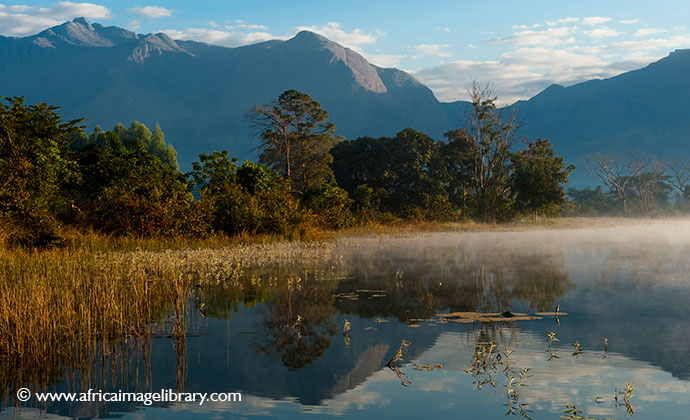
Less than an hour’s drive from Blantyre, Mulanje has long been the country’s premier hiking and rock-climbing destination, popular with residents and tourists alike for its dramatic scenery and well-organised and inexpensive facilities. Indeed, Mulanje is the main focal point of the Mountain Club of Malawi (MCM), which was founded as the Mlanje Mountain Club in 1952 and adopted its present name in 1980. There are innumerable hiking routes from the base to the plateau, the most popular being the Skyline Path to the Chambe Basin and the Lichenya Path to the Lichenya Plateau, both of which start at Likhubula Forestry Station some 8km from Mulanje Town. On the plateau itself there are ten mountain huts, one owned by the CCAP, and the remainder maintained by the MMCT and MCM in collaboration with the Forestry Department. These huts are connected to each other by trails ranging from 3 to 6 hours’ walking duration, and the peaks and valleys of Mulanje offer enough walking and climbing possibilities to keep anybody busy for at least a month. In addition, many of the streams on Mulanje are stocked with trout, and fishing permits are issued by the forestry office at Likhubula.
Nkhata Bay
Long one of the best-kept secrets on the African backpackers’ trail, Nkhata Bay has steadily grown in reputation over the past two decades to eclipse Cape Maclear as the most popular traveller congregation point on Lake Malawi, if not anywhere between Zanzibar and Victoria Falls. It’s not difficult to see why. Nkhata Bay has a gloriously lush and scenic setting, comprising a twin pair of bays enclosed by forested hills and separated by a long, narrow peninsula. And the small town itself, nestled between the hills and lakeshore, is as charming as it is uncategorisable – call it an overgrown Tonga fishing village, a venerable district capital, a bustling market port or an idiosyncratically laidback lakeside resort, one senses that few of its estimated 15,000 residents would be sure which of these labels wears best.
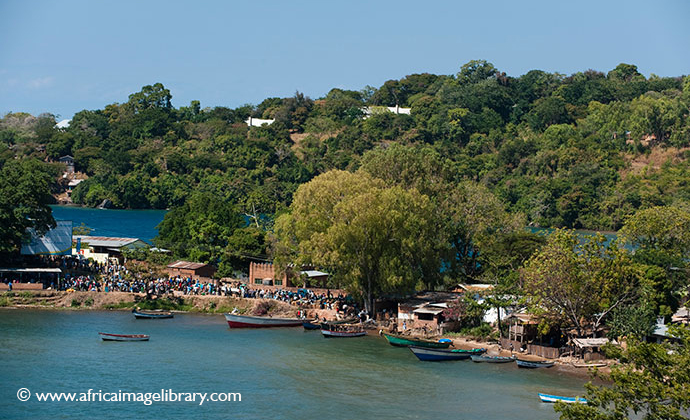
A big part of Nkhata Bay’s appeal is the rare sense of traveller community that embraces the town and string of popular lodges running out towards Chikale Beach. The place is also addictively laid-back, so much so that it habitually paralyses the will of travellers, and infuses their best-laid plans with an element of suppliant inertia. And while most visitors associate Nkhata Bay with lazy days and party nights, the town offers plenty of interest to more active travellers, including kayaking, snorkelling, forest walks, fish-eagle feeding, beach volleyball or simply joining in a local football match. Worthy of a special mention are the day/night dives and diving courses offered by Aqua Africa in a unique environment described by one experienced diver as ‘fresh water with sea equivalents’.
Nyika Plateau
At the heart of the Nyika National Park, averaging over 2,000m in altitude, lies the gently undulating Nyika Plateau, where montane grassland and fern heather communities, notable for their prolific wild flowers during the rainy season, are interspersed with isolated stands of indigenous forest and exotic pine and eucalyptus plantations. Although the Nyika Plateau is very much the centrepiece of the park and the only part that is readily accessible to tourists, the Brachystegia-covered lower slopes of the Nyika range also lie within its boundaries.
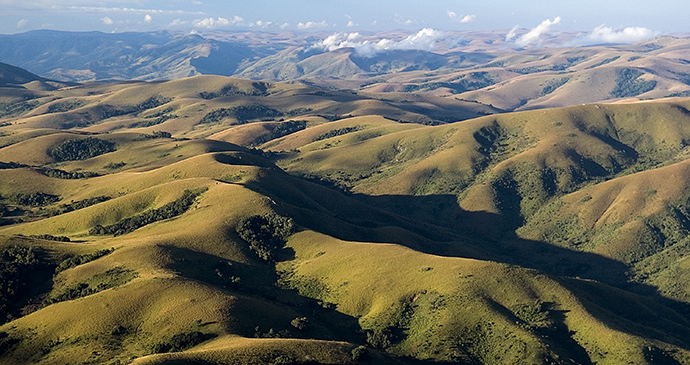
The plateau is one of the coldest parts of Malawi, moderate in summer but subject to fierce winds and with sub-zero temperatures often recorded on winter nights. October is an ideal time to visit: it’s less cold and the rains haven’t yet arrived, and wild flowers spring up all over.
Zomba Plateau
Rising to the immediate northeast of the eponymous town, the Zomba Plateau is an isolated syenite protrusion that extends over around 130km² and reaches an altitude of 2,087m at Malumbe Peak in the southwest. The plateau’s northwest rim forms the southern escarpment of the Upper Shire Valley, and is characterised by sheer drops of up to 1,200m, offering spectacular views over the plains below. Much of the plateau is protected in Malawi’s oldest forest reserve (gazetted in 1913), and while much of the indigenous vegetation has made way for pine plantations, it also supports significant patches of indigenous riverine and montane forest, as well as areas of tangled scrub and Brachystegia woodland. A large dam was constructed in 1999 in the bowl of the mountain, but this does little to interrupt the natural feel.
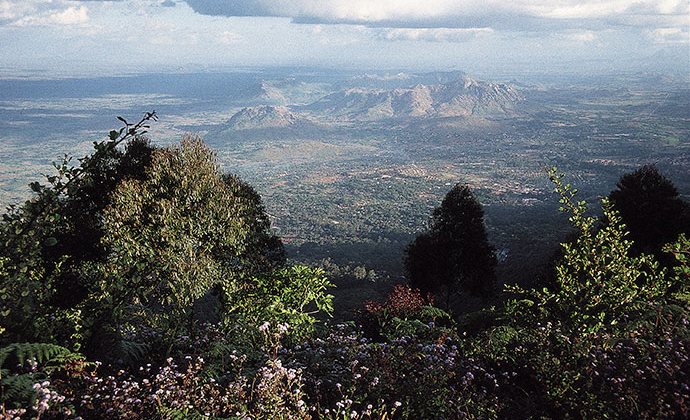
Though it is less spectacular and wild than the larger Mulanje and Nyika plateaux, the upper reaches of Zomba are considerably more accessible, and a vast network of footpaths makes it one of the most popular areas in Malawi for rambling and hiking. For most visitors, Zomba’s scenery is undoubtedly its main attraction, but the mountain also supports a rich birdlife, while mammal species present include elusive populations of leopard, serval cat and mongooses. Antelope present on the mountain include bushbuck, klipspringer and red duiker, vervet monkey and yellow baboon are reasonably common, and the lovely samango monkey is seen in indigenous forests, particularly around Chingwe’s Hole and Zomba Forest Lodge.
Cape Maclear
Situated in a 6km² enclave of unprotected land within Lake Malawi National Park, the second-largest settlement on the Nankumba Peninsula is the fishing village known to locals as Chembe but to most outsiders as Cape Maclear. It’s a beautiful spot, enclosed by tall forested mountains and lush rocky islands, and one that has long enchanted overseas visitors.
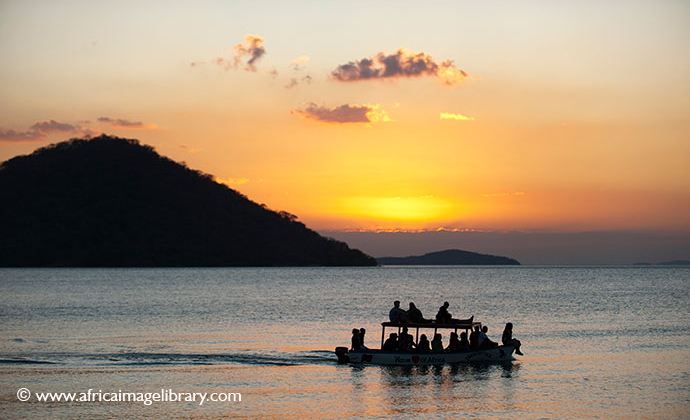
In addition to having the broadest range of accommodation options anywhere on the lake, Cape Maclear offers a peerless range of aquatic activities, from snorkelling and diving to kayaking and motorised lake excursions. The notoriously assertive beach-boy and tout culture that once characterised the village has been diffused, thanks to the adoption of a rota system that assigns a specific guide to a specific lodge for a specific period. And yet there remains a gratifyingly integrated feeling to tourist development in Chembe, with most lodges lying right in the heart of the village, so that visitors are exposed to everyday African life in an unforced manner very different from any other lakeside resort in Malawi. There’s a strong strand of community tourism here, with a range of projects that directly benefit Chembe people: from local tours, jewellery- and papermaking workshops, drumming lessons and more.
Adding to these charms, Chembe is one of the few accessible parts of the Malawian lakeshore to face northwest, which not only ensures some protection from the fierce winds that sometimes rise on the lake, but also means it is perfectly positioned for spectacular sunsets.
Chongoni Rock Art Area
Stretching northwest of Dedza for about 25km, the Chongoni Rock Art Area is one of Malawi’s most neglected national treasures, containing 127 rock faces and shelters that represent an ancient painting tradition dating back at least 2,000 years. Despite being inscribed as the country’s second UNESCO World Heritage Site (the other being Lake Malawi National Park) in 2006, the area has seen little formal tourist development. Despite this lack of development, several panels can still be visited with reasonable ease by interested travellers, most notably those at Chencherere, Namzeze and Mphunzi. At the core of the 126km² UNESCO-inscribed rock-art area, the Chongoni Forest Reserve lies immediately east of the M1 north of Dedza, and is also the site of the Chongoni Forestry College and associated Kazela Forestry Resthouse. Two-thirds of the painted panels lie within the forest reserve, including Chencherere and Namzeze, but the rock-art area also extends southwest from the M1 as far as Mphunzi Mountain, where a cluster of eight panels forms the most worthwhile goal in the area for those with time to visit one site only.
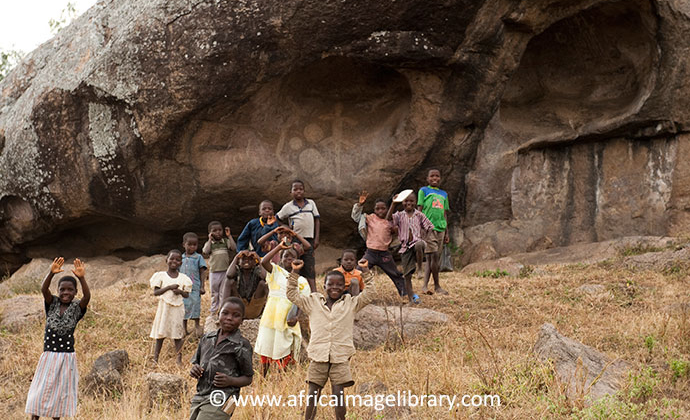
Rock paintings aside, this is a very scenic part of Malawi, studded with dozens of massive granite inselbergs (outcrops), and ideal for casual rambling, whether you’re based in Dedza Town or the resthouse at Chongoni Forestry College. The forest reserve supports a mixture of plantation forest and Brachystegia woodland, as well as small patches of evergreen forest on some of the hills. Baboon, vervet monkey, rock hyrax, grey duiker and klipspringer are quite common in the area, leopard and samango monkey are present in the evergreen forest, and the varied avifauna includes a similar range of Brachystegia-associated species as Dzalanyama, as well as a limited selection of forest species.
Gurué
Surrounded by orderly tea plantations and immense granite protrusions, the breezy market town of Gurué sits at an altitude of 720m in the fertile green foothills of the southern Rift Valley. It is the eleventh-largest town in Mozambique, with a population estimated at 145,000, a comparatively moist and cool climate, and an energised, bustling mood absent from many of its more torpid coastal cousins.
Gurué’s relatively temperate climate is a refreshing change from the coastal heat, and the immediate environs offer some good opportunities for relaxed rambling in scenic surrounds (recalling the Mulanje and Thyolo districts of neighbouring Malawi), but the major attraction here is Mount Namuli, one of Mozambique’s premier hiking and birding destinations.
The town itself is of limited architectural interest, mostly dating to the post-World War II era, but there is a rather pretty small chapel, with some colourful murals inside, at the northeast end of Avenida República.
Mount Namuli
Mozambique’s second-highest peak at 2,419m, Namuli is a massive granite dome that protrudes a full kilometre above a grassy rolling plateau incised with numerous streams and gorges. The main peak of Namuli lies only 12km northeast of Gurué, but is not visible from the town itself. Several other tall domes stand on the same plateau, and the entire massif comprises almost 200km² of land above the 1,200m contour.
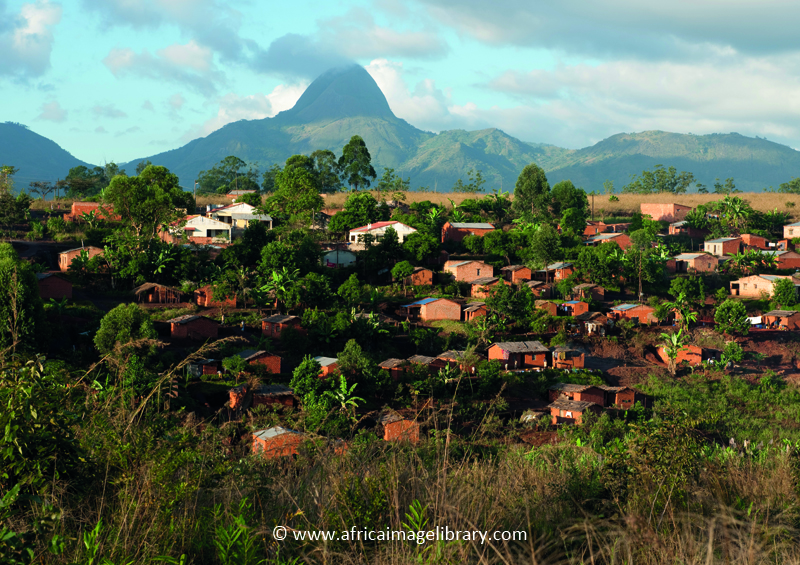
Popular with hikers for its lovely green upland scenery, Namuli is also a mountain of great biological significance, supporting a variety of montane habitats including some 12km² of moist evergreen forest that shows some affiliations to the Eastern Arc Mountains of Tanzania. Two main patches of forest remain: the larger but relatively inaccessible Manho Forest, which borders the Muretha Plateau about halfway between Gurué and Namuli Peak, and the more accessible Ukalini Forest at the southwest base of the granite cliffs below Namuli Peak.
Vincent’s bush squirrel, listed as Critically Endangered by the IUCN, is endemic to these forests, which also support samango and vervet monkey, red and blue duiker, various small carnivores and at least one endemic but as yet undescribed species of pygmy chameleon.
Cascata de Namuli
The best known of several spectacular waterfalls on the western side of the massif, the Cascata de Namuli is formed by the Licungo River as it cascades about 100m down a sloping rock face north of Gurué. It is an excellent goal for a day walk, a 5–6-hour round hike out of Gurué that passes through a variety of habitats, including the tea plantations of the Chá Zambezi Estate, stands of bamboo and small patches of indigenous forest, and you can swim in a pool above the waterfall. The riverine forest above the waterfall reputedly shelters the Namuli apalis and other rare birds, but it is unclear whether these range as far down as the waterfall itself.
Casa dos Noivos
Situated in the hilly countryside north of Gurué, the Casa dos Noivos is an abandoned hilltop dwelling that must have been very beautiful in its prime, and that still offers one of the most spectacular views in the region, over a rolling series of verdant valleys below Mount Namuli. The origin of its name (literally ‘House of the Bride and Groom’) is unclear: it may be that the house was built for a newlywed couple or simply that it is known locally as a place for romantic assignations.
Lake Tanganyika
Lake Tanganyika is one of a series of geologically old lakes that have filled areas of the main East African Rift Valley. Look at a map of Africa and you will see many of these in a ‘string’ down the continent: lakes Malawi, Tanganyika, Kivu, Edward and Albert are some of the larger ones. Zambia just has a small tip of Tanganyika within its borders, but it is of importance to the country. Access to Lake Tanganyika grants Zambia a real port with transport links to a whole side of Tanzania and (during peaceable times) direct access to Burundi. It also makes this one corner of Zambia totally different from the rest of the country, with a mix of peoples and a ‘tropical central Africa’ feel. There are some well-established lakeside lodges, those to the east within striking distance of Kalambo Falls, and two in the vicinity of the little-known but viable Nsumbu National Park.
Likoma Island
The island of Likoma, 8km long and 3km wide, lies within Mozambican waters but is territorially part of Malawi, mainly as a result of its long association with Scottish missionaries. Today, the island’s main attraction for travellers is its isolation from the mainland and mellow atmosphere. This is no conventional tropical-island paradise, though the beaches really are splendid with the mountainous Mozambican shore rising above them, while the interior has a certain austere charm, particularly the southern plains which are covered in massive baobabs, shady mango trees and studded with impressive granite outcrops.
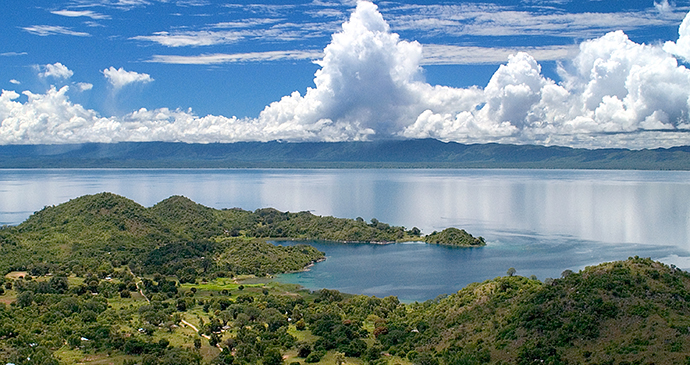
Likoma has always generated a great deal of interest among travellers, but it remains surprisingly little visited. Above all, perhaps, Likoma has an overwhelmingly friendly mood, making it a good place to get to know ordinary Malawians.
Lilongwe
Lilongwe is not the most imposing of African cities. More than four decades after being proclaimed capital of Malawi, it still comes across as something of a work in progress: a scattered and incohesive patchwork of commercial hubs, administrative and ambassadorial zones, leafy upmarket residential suburbs and village-like suburban shanty towns that sprawl unconvincingly between grassy fields and large tracts of indigenous woodland and plantations.
The city has two main focal points, Old Town and Capital City, both very different in character, but neither exactly over-endowed with personality. Most travellers end up in Old Town, which is the main centre of commerce, boasting an energetic market and bus station, a sprinkling of shiny new malls and all manner of slightly anachronistic Indian retail stores. The Old Town has witnessed rapid expansion in recent years, yet it still has the feel of a southern African everytown, similar in mood and appearance to any number of medium-sized regional urban centres south of the Zambezi. And it’s about the only area you can tackle on foot.
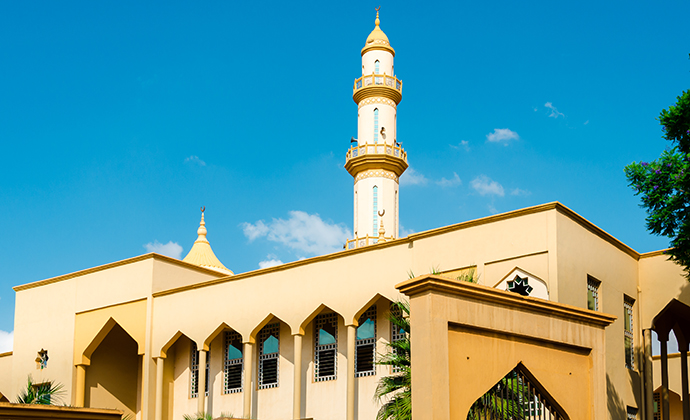
Capital City, by contrast, is a true original. Custom-built during the Banda era, it still feels tangibly contrived, an open-air huddle of semi-skyscraping office blocks, freshly painted banking houses, leaf-shrouded embassies, warehouse-like supermarkets and half-full car parks whose distinguishing feature is a kind of collective capacity to cancel each other out. From whatever angle you approach Capital City, and no matter how often, it is difficult to shake off the feeling that it ended before it began and you somehow blinked at the wrong moment!
So it’s not Dakar or Timbuktu, but Lilongwe could scarcely be a more equable or manageable introduction to urban Africa. The climate is comfortable, getting in and out of town is simplicity itself, accommodation is abundant and conveniently situated, and shops and markets are well stocked. In some ways, Lilongwe feels like a microcosm of the country it governs – small but deceptively densely populated, friendly and personal, dusty and colourfully chaotic, and full of contrasts. Behind the houses and offices, within eyeshot of parliament, people still grow maize in their gardens. Villagers cycle miles from outlying areas to sell produce at the country’s largest market, weaving between the buses that form jerking, hooting, belching queues in the Old Town centre. And as night falls, the familiar urban rumble is punctuated by sounds eerily evocative of Lilongwe’s African setting – the wild whooping of spotted hyenas and chilling cries of bushbabies, both of which haunt the nature sanctuary bisected by the main trunk road between Old Town and Capital City.
Livingstonia
Perched on the Rift Valley Escarpment above Lake Malawi, the town of Livingstonia, founded by Scottish missionaries in the late 19th century, is one of the most scenic places in all of central Africa. The vertiginous views from the edge of this historic town – plummeting down the escarpment and across the lake to the Livingstone Mountains in Tanzania – are quite breathtaking. Indeed, on a clear day, and with sufficient imagination, the horizon is so distant that you’ll swear you can see the curvature of the Earth.
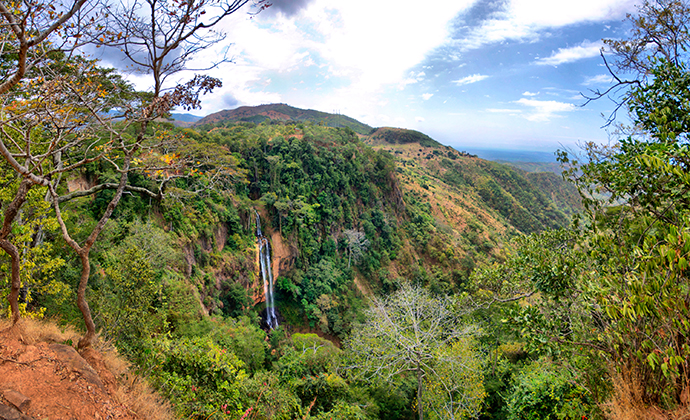
Arguably the most intriguing settlement anywhere in Malawi, and certainly the most unusual, Livingstonia is a curiously unfocused place. Dotted along the escarpment, there is a resthouse, school, technical college and hospital, all dating to the turn of the 20th century. Elsewhere, separated by scattered patches of plantation forest and indigenous woodland, is a low-key market enclosed by a few poorly stocked grocery shops, the vast mission church, and a cache of venerable administrative buildings and a clock tower overlooking a bizarrely redundant stone traffic circle surrounded by blooming flower beds. The overall impression is as if somebody started transporting a small Victorian village to the edge of the Rift Valley Escarpment, but got bored before they finished the job.
The combined scenic and historical interest of Livingstonia makes it one of the most popular non-lakeside tourist destinations anywhere in Malawi. True, it’s not that easy to reach on public transport, but for many the uphill hike from Chitimba is an attraction in itself. And once you’ve ascended the escarpment, there’s the choice of several very different but equally likeable places to stay, while amusements include a tour of the village and its museum, the walk to the spectacular Manchewe Falls, and the wide range of hikes that are possible around the escarpment.
Liwonde National Park
Dominated by the sluggish Shire River and its lush fringing vegetation, Liwonde National Park evokes every romantic notion of untrammelled Africa, especially at night, when the air resonates with the uninhibited chirruping of frogs and grunting of hippos. And while this 548km² reserve has to rank as a second-string safari destination compared with the continent’s finest, it does offer perhaps the best wildlife viewing and birdwatching in Malawi, and its aesthetic merits – this is the quintessential African river scene – elevate it close to being one of Africa’s truly great game reserves.
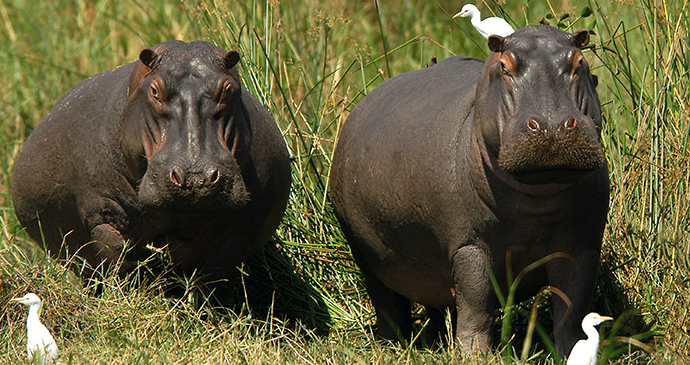
Liwonde is a relatively small park, only 50km long and nowhere more than 15km wide, and an estimated 100,000 people live within 5km of its boundaries, where they attempt to scrape a living in what is technically a marginal agricultural area. As a result, there has been a long history of conflict between wildlife and local villagers, and poaching is an ongoing problem, one that resulted in the local extinction of several large mammal species, including lion and African wild dog, though following the park’s fencing in 2017 lion – and cheetah – have been reintroduced. There is a wealth of wildlife to be seen in Liwonde, and sightings here feel very genuine, wild and pristine.
Majete Wildlife Reserve
Gazetted in 1955 and neglected by almost everybody except poachers for its first half-century of existence, Majete Wildlife Reserve is in the midst of a dramatic and encouraging resurgence. With the reintroduction of lions (rounding out the ‘Big Five’) in 2012, Majete has arguably distinguished itself as Malawi’s premier game-viewing destination. The catalyst for this reversal of fortunes is the private African Parks organisation, which entered into a 25-year management contract with the government in March 2003, with the twin aims of resuscitating the reserve as a conservation area and as a source of sustainable income for surrounding communities. African Parks has since reintroduced more than 3,000 head of game into the reserve, erected fences, improved the road infrastructure, constructed an excellent community-owned tented camp, cultural centre and campsite, initiated a varied programme of tourist activities, and granted the highly regarded Robin Pope Safaris a private concession for their stunning new five-star luxury lodge, Mkulumadzi.
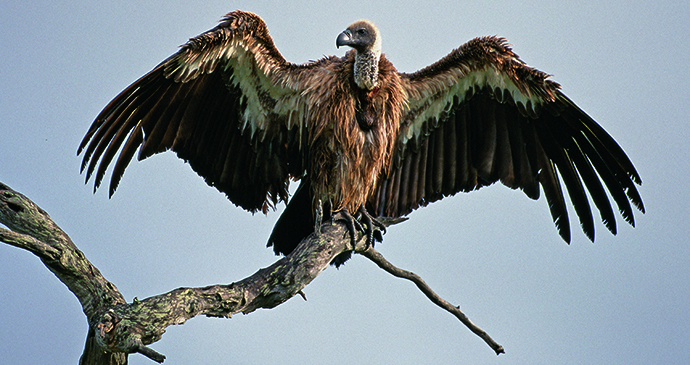
Only a few years ago, it would have been misleading to compare Majete to Liwonde National Park, further north along the Shire River, but the recent improvement in game viewing, infrastructure and accommodation has placed Majete in direct competition with Liwonde for the honour of being Malawi’s premier park. This ongoing development is massively encouraging, and Majete now boasts the greatest antelope diversity in the country, offering a good chance of seeing half a dozen species in the course of a day, including the majestic greater kudu, handsome sable antelope and localised Lichtenstein’s hartebeest.
Related books
For more information, see our guide to Malawi:
Related articles
From boiling lakes to vast alpine bodies of water, these are our favourite lakes from around the world.
Catch a glimpse of southern Africa’s iconic animals with this selection of reserves and national parks.
To Westerners, it may seem as if life in Malawi hasn’t changed much during the pandemic.
Author Helena Smith discusses the range of music styles you can expect to hear on a trip to Malawi.
Come and explore the incredible arts, music and culture on display throughout Malawi.
